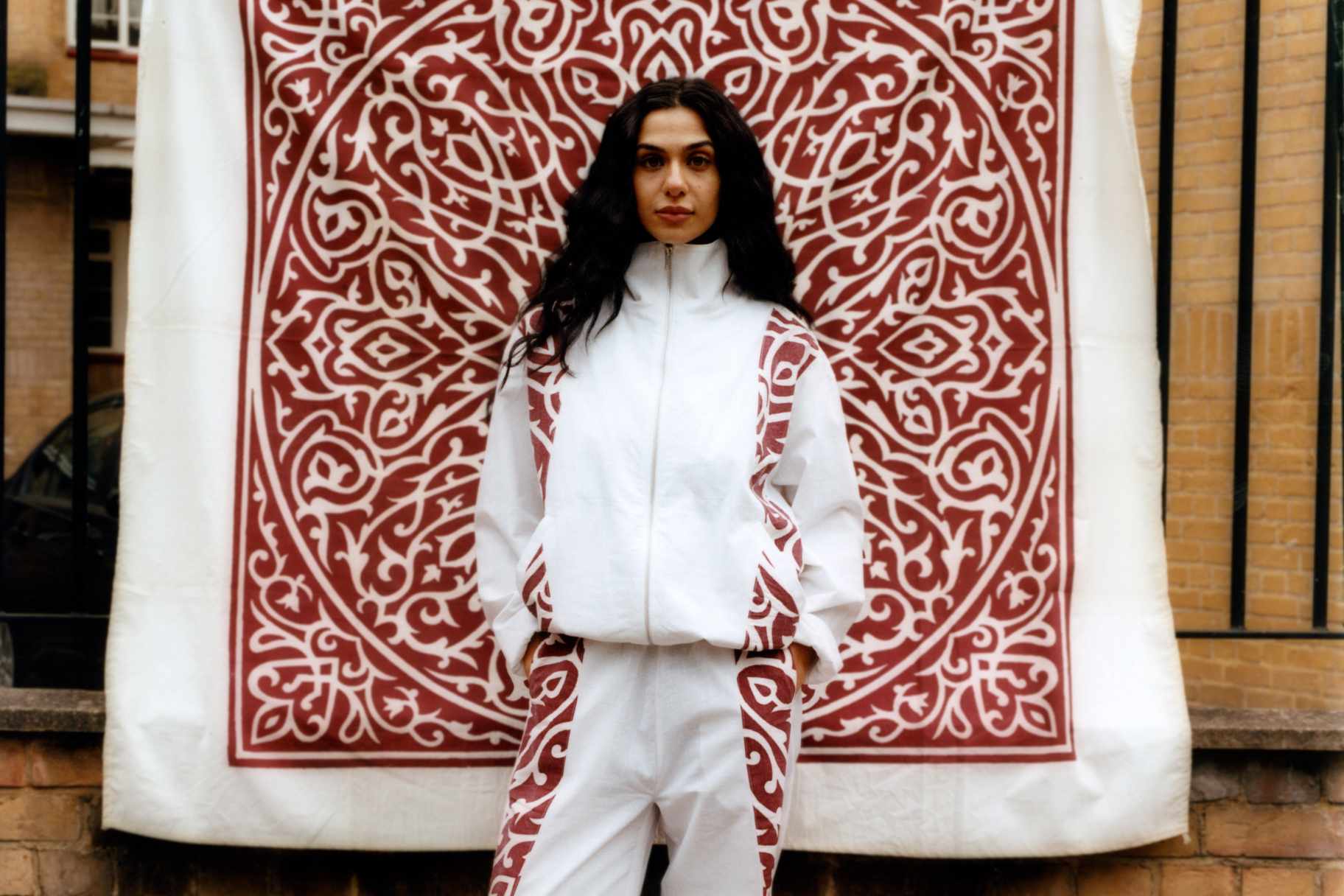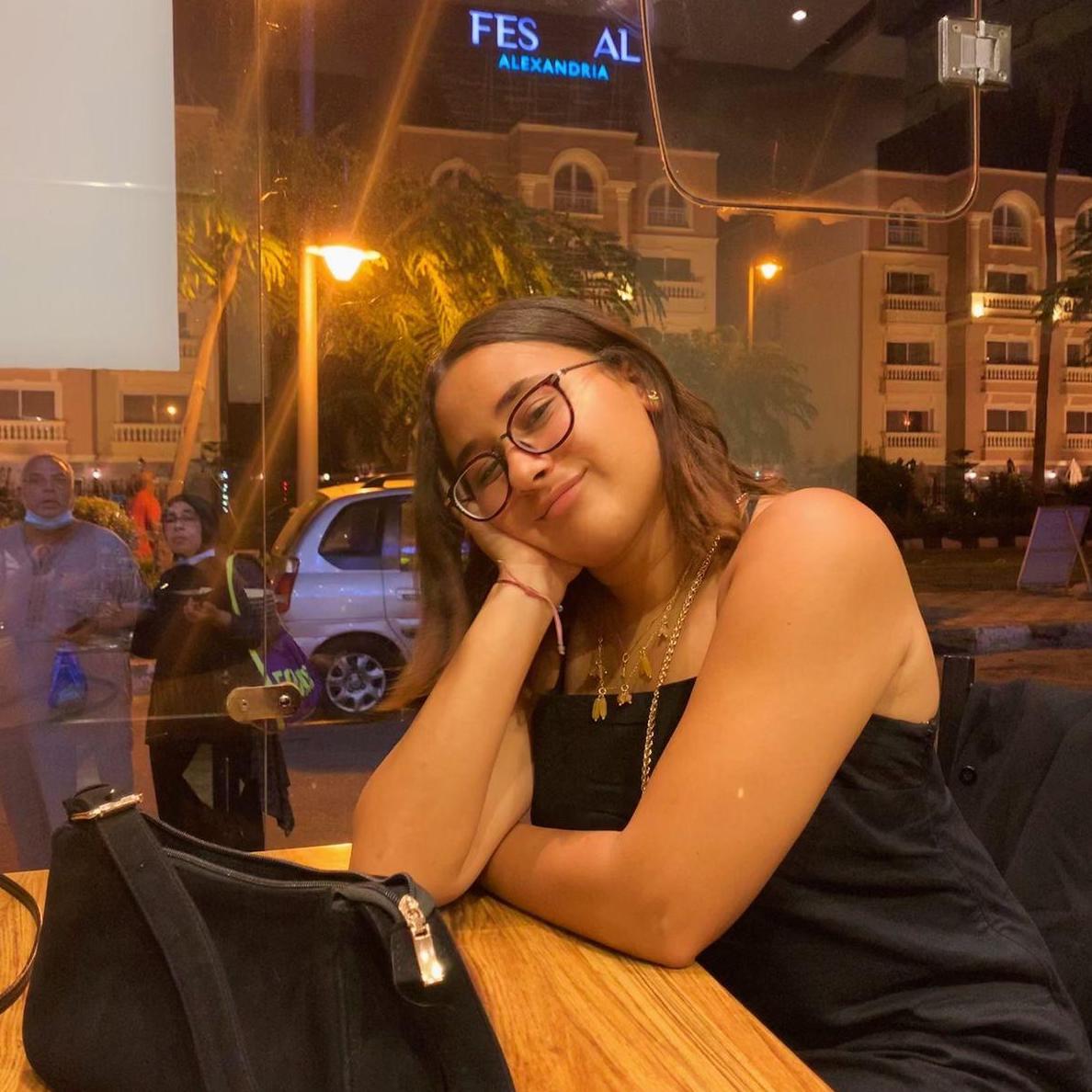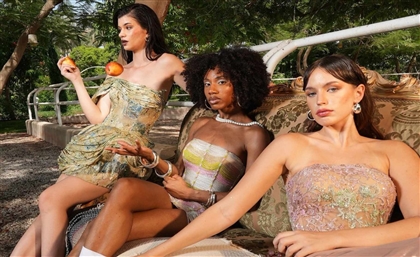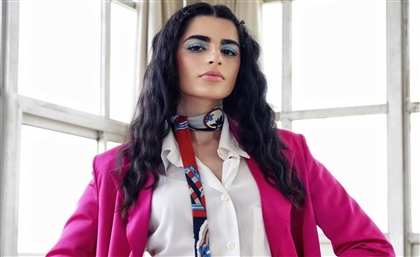Iraqi-Egyptian Label Suez Refashions the Ancient Khayamiya Into Style
After exploring the Iraqi keffiyeh in their first collection, Suez spotlights a forgotten art in ‘Common Thread’.

Three thousand years ago, the art of khayamiya lined the streets of Egypt. Translating to "tent-making," this ancient hand-stitching practice was once used to fashion tents for royalty, aristocracy, and the wealthy. Today, the practice nears extinction; the only image the word "khayamiya" evokes in our minds is one of cheap printed Ramadan-themed tablecloths. Only 18 khayamiya artisans remain on Egypt’s Khayamiya Street in Bab Al Khalq. Their work is now far from central to the city’s fabric.

Returning the forgotten khayamiya to the spotlight, the London-based Egyptian-Iraqi label Suez is reviving the art in its new collection, "Common Thread."
“Khayamiya has been something I'd been wanting to incorporate for some time now—since we last spoke,” Suez founder Serag El Meleigy tells Scene Styled. “I think it was the perfect next step for Suez; me being half Egyptian and spending a lot of time in Egypt also made it that much more special.”

As a pursuit, Suez is archival. The label seeks to immortalize crafts that were once popular but have been lost on the road to modernity. Suez, observing that our attire has become synonymous with that of the colonizer, rejects homogeneity and sifts through millennia of historical archives to return culture to our costumes.
“We utilized the khayamiya in two forms: first in its true hand-stitched form, and secondly in a printed form—both of which we purchased from the artisans on Khayamiya Street,” shares El Meleigy. “The first khayamiya blanket I bought was back in 2023, so my ideas have been brewing with the khayamiya for some time now.”

Shortly after his first purchase, El Meleigy returned to Khayamiya Street for more. This is when "Common Thread" was born. The two blankets, both created by the same khayamiya artist, Esaam Ali, were fashioned into two beautiful single-piece collared jackets in two colorways—red and blue.
In respect to the amount of work, skill, and creativity poured into their making, whether as the original khayamiya blanket by Ali or the jacket itself by El Meleigy, the khayamiya jackets are special pieces. Surely, they could be dressed down, but something about the fabric, the common thread that holds them, demands a more prestigious welcoming of the pieces.
“The 1-of-1 khayamiya jackets are obviously statement pieces. We’ve seen them worn for a live recording performance, and we’ve had people say they’d save theirs for big events. I love the idea of these 1-of-1 jackets evolving into some form of suit for big occasions—but the Egyptian version.”

Besides participating in the cultural evolution of our occasion wear, Suez’s "Common Thread" weaves the khayamiya practice into daily casual wear.
“The meander garments made way for the incorporation of 'loud patterns' in subtle ways—they are made for every occasion,” explains El Meleigy. “The elastic waist of the pieces gives them the benefit of comfort, but the straight-leg structure creates an illusion of formality that can be dressed up or down.”

“I heard one girl wore her keffiyeh meander trousers, from our previous collection, to a wedding, and someone else wore the full keffiyeh set at her dad’s MBE receival ceremony at a royal palace.”

To El Meleigy, "Common Thread" is an exciting pursuit, one he is consistently looking for ways to make even more tailored. In the future, he hopes to work more directly with khayamiya artisans, involving their work directly in garment-making, and potentially seeing them embroider on clothes, rather than refashioning their blankets. Before we know it, the art of khayamiya will be back on hoodies, tracksuits, shorts, and more.
- Previous Article Everything You Need to Know About MARAM's Custom Saint Levant Look
- Next Article Monochrome Monday: The Electric Blue Edition

















